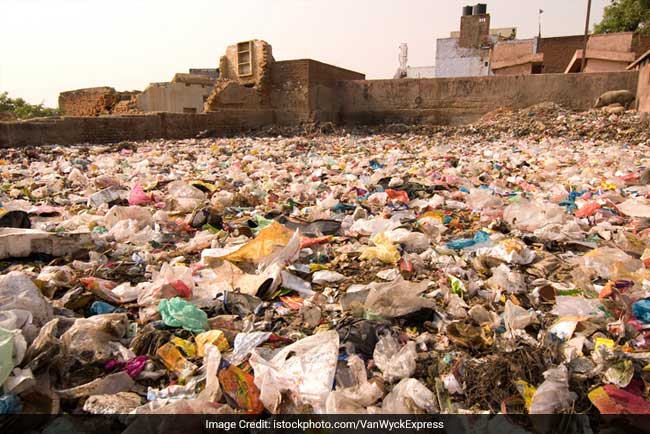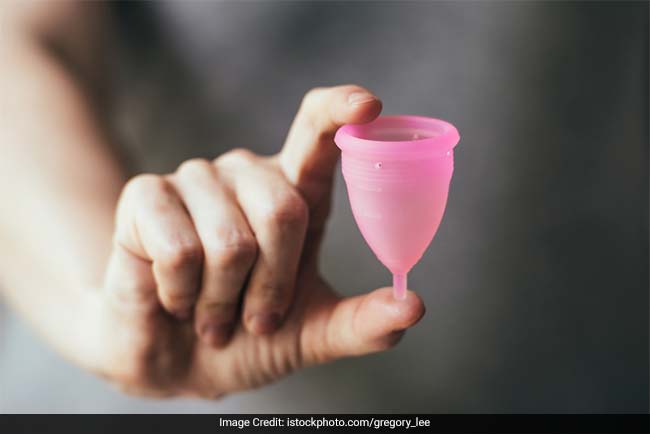Highlights
- Solid waste generation in India is 63 million tonnes per year
- 353 million women generate 44,125 million kilos of menstruating waste
- What we need is education and awareness about the eco-friendly practices
Sanitary waste disposal is a huge problem that needs to be tackled on an urgent basis. Every month, around 353 million women and adolescent girls across India use sanitary products and generate menstrual waste, and this number is growing with each passing day. So, what’s the fuss? The problem lies in the disposal of sanitary waste. Believe it or not, a single woman can generate up to 125 kg of non-biodegradable waste through her menstruating years alone.
Studies have shown that one sanitary pad could take from 500 to 800 years to decompose as the plastic used is not bio-degradable, and can lead to health and environmental hazards. Do the math, and you see why this is a critical issue that needs immediate solutions.
While most of us wait for governments and manufacturers of sanitary products to offer better solutions, here’s a look at some people who took matters into their own hand, to cut down menstrual waste.
1. An Idea That Changed Papna Mau’s Village Waste Woes
Every problem has a solution! That is the motto that the residents of Papna Mau, a small village on the outskirts of Lucknow, abide by. They came together and decided to use locally developed sustainable methods for disposing of their sanitary waste. Today, each house in Papna Mau village has one thing in common – a low-cost incinerator. It is essentially a small earthen pot which is lined with dried leaves and works as an incinerator into which all the menstruating females in the family throw their used sanitary pads. Once full, the waste is soaked with some oil and burnt. After the waste is set alight; the resultant ashes are then disposed of.
By taking this small step towards a green and healthy India, the village is saving an enormous amount of waste going straight into landfills. Now other villages in the area are also adopting this method to tackle the growing mounds of menstrual waste.
Though the solution is simple and stops menstrual waste from entering landfills, it is not viable on a large scale. The biggest problem is the issue of air pollution from burning the waste. It is also important to dispose of the ashes properly since dumping the ashes after burning it can contaminate the water and soil further.
2. A Simple Red Dot On Your Menstrual Waste Can Solve India’s Waste Miseries
If every menstruating woman starts segregating her waste by simply putting a red dot on her used sanitary waste, then the lives of several sanitation workers can be saved. Have you ever given a thought to what happens to your menstrual waste after you dispose of it? After you hand your sanitary waste to your garbage collector, the waste is segregated manually by the waste pickers. This exposes them to micro-organisms like E.Coli, salmonella, staphylococcus and pathogens that are responsible for life-threatening diseases like hepatitis and tetanus.
Then after segregation, the sanitary waste is driven out of the city and buried in a landfill. Since it is the non-biodegradable waste, this ends up staying in landfills for up to 800 years. The end result – overflowing landfills causing endless harm to the environment.
If we follow the practice of segregating our own waste simply by putting a mark on it then we can solve a lot of waste woes. But, there is also an urgent need for a system in which ragpickers can separate this waste and send it to be disposed off correctly. This is the mantra being followed by Pune’s SWaCH ragpickers cooperative which handles around 20,000 kgs of dirty diapers and sanitary pads every day.
3. Switch To Environment-friendly Pads And Save India
Have you ever heard of a sanitary pad that can be re-used for a period of 1.5 to 2 years? Enter Project Baala, the brainchild of Soumya Dabriwal and Nitisha Sethia. It is one of the few initiatives today that aims at spreading awareness about menstruation in rural schools along with providing rural women and girls with environment-friendly sanitary pads. So, how is this pad different from the conventional ones? This pad is made of three layers of cloth stitched together and is not made of plastic or items that are non-biodegradable. It can be rewashed and reused.
Project Baala is not the only organization that has come up with the idea of eco-friendly pads. Goonj, a Delhi based NGO, has also started turning small pieces of clean cloth into sanitary pads which are called ‘MY Pad.’ However, currently in India, the idea of using re-usable pads is uncommon and not many of us are aware. What we need is more and more organisations or manufacturers that can produce re-usable pads.
4. Menstrual Cup, India’s Next Big Revolution?
Menstrual cups are made of medical grade silicon that can be inserted into the vagina during menstruation and simply collects the blood. Unlike regular pads, menstrual cups can be used again and again and are much more hygienic and eco-friendly than sanitary napkins. However, the challenge which still persists is awareness and availability.
The Way Ahead
It may not be feasible for every house to dispose their sanitary waste at home but the onus definitely lies on us to effectively segregate our waste.
In order to manage sanitary waste, the new guidelines in the Solid Waste Management Rules 2016 issued by the Union Ministry of Environment, Forests and Climate have made it mandatory for manufacturers to provide a pouch or wrapper for proper disposal of menstrual waste whenever they sell their products. That means the pouch should be made of materials that is of recycle valuable or can be decomposed easily without polluting the environment. However, implementation still remains a huge issue.
The need of the hour is education, awareness, and availability of the eco-friendly practices when it comes to managing menstrual waste effectively. Once that is taken care of, it will be easy for anyone to make a green switch.




















































Smita
April 25, 2017 at 7:56 am
Menstrual cup and reusable pad do not seem to be forward looking options and they are not attractive for women either. We need to know what other nations are doing about solid waste management.All countries will have this issue.
Seema
April 27, 2017 at 9:01 am
On the contrary, menstrual cups and reusable sanitary pads are extremely cost effective with ZERO discharge of Sanitary waste to municipalities, while tackling the much needed issue of women’s hygiene. They save costs at 3 levels: investment in sanitary products by individuals, which is a deterrent for most middle and lower middle class women to move to disposables. A one time investment goes from 3 years to 10 years. Municipal costs come down drastically for collection and scientifically disposing pads (In Bangalore, expensive tech by Medical Waste Processing centres is used to dispose tons of Sanitary pads and diapers each day. An unevolved municipality still has to pay for collection and transport of said waste to landfills, where these products sit for hundreds of years!) Third is savings on medical expenses from infections, rashes, air pollution related illnesses due to burning, etc. Learn more on GreenTheRed.in
Amardeepsharma
September 24, 2017 at 8:17 pm
TECHNOLOGY AVAILABLE FOR PROCSSING
MSW/GARBAGE WITH ZERO LANDFILL/DUMPING AND ZERO POLLUTION.IN ONE HOUR COMPLETELY CONVERT IN PELLETS.CAN BE USED AS SUBSITUTE OF COAL
abhijeet
August 21, 2018 at 5:35 pm
the problem is ‘how to segregate sanitary waste! and we are glad to know that some startups get initiatives to tackle the issue like project red dot India.